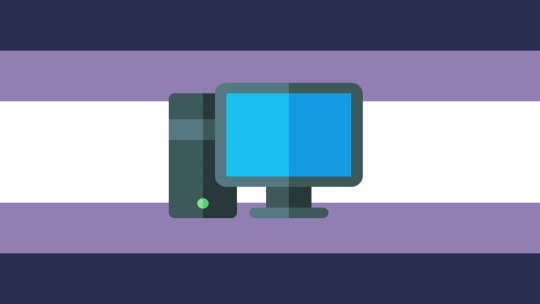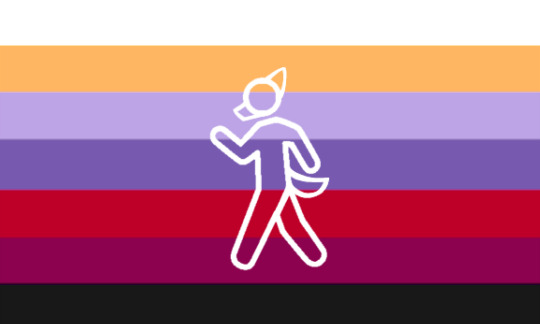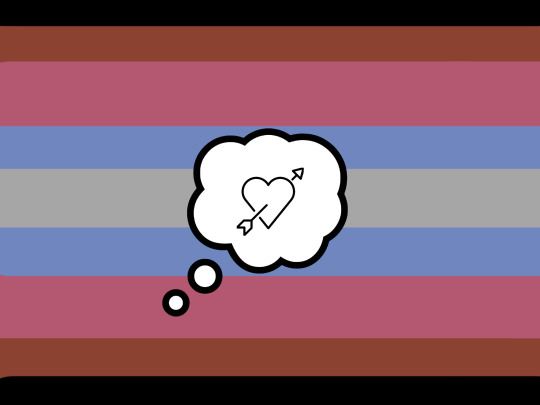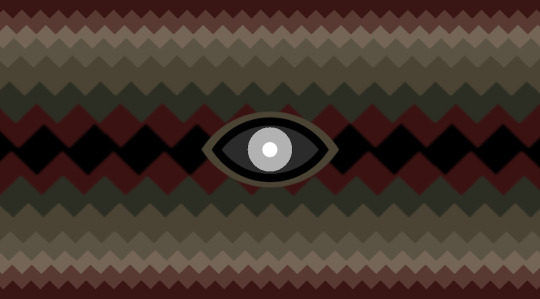#mud coining
Text
It’s Coining Time!

Glitching Mind Disorder (GMID)
Glitching Mind Disorder is someone who’s mind has a constant static, numbing, or null mind. This can be connected to a trauma, pass on genetic trait, or gained later on in one’s life.
symptoms contain :
Mind having a constant hazing or null/blank state
A struggle to consecrate even on simple tasks
Fluctuating between too many thoughts to none at all
Forgetfulness
Easy to misunderstand and not process information
no flag : if one is made I’ll repost it! I do not plan to take requests at this time. But I hope you enjoy.
#steven mudverse#muds 🌟#👁️📝#🧠📝#medically unrecognized disorder#wet dirt#mud coining#mud term#rq 🍓🌈#🍓🌈 safe#radqueer#Glitching Mind Disorder#GMID
28 notes
·
View notes
Text
spreecoiner

A MUD term for a coiner who commonly gets coining “sprees”
includes:
-avoiding all other activities to coin terms
-needing every coin to be original and perfected
-Hyperfixating on making the best flags
-becoming stressed when a flag isn’t perfect, can lead to self doubt
-wanting ones’ coins to become popular
-wanting one’s coins to be used by others, archived, acknowledged by others, made into official terms
this CAN be considered an addiction
39 notes
·
View notes
Text

୨୧ Unius Lying Disorder (ULD)
a MUD (medically unrecognized disorder) where one excessively lies but it is usually towards one specific person or one specific group of people
symptoms can include;
- Faking stories, events, etc. / lying in general to a specific person or group
- Not letting the non-specific people around those specific people you lie to due to the fear of those people finding out you're lying
- Perfecting your lies to that specific person / group
- Not caring that you're lying to that specific person / group but (usually) caring when you lie to other people
- Becoming an excessive liar only around that person / group


[PT: coined before? consider it an alt flag!]
#— new video⠀♡ ( coining )#mud coining#medically unrecognized disorder#pro radq#radqueer#radqueer safe#rqc🌈🍓#rqc#rq 🌈🍓#rq safe#rq please interact#rq community#radq#radqueer community#radqueer friendly#radqueer please interact#radqueer intro#pro rq 🌈🍓#rqc 🌈🍓#radqueer 🌈🍓#pro radqueer#transid#pro transid#transx#transid safe#pro transx#radqueers please interact#transid please interact#transid community#transid coining
42 notes
·
View notes
Text


—ㅤInternetㅤAddictionㅤDisorderㅤ( IAD )
Aㅤdisorderㅤcharacterizedㅤbyㅤproblematicㅤbehaviorㅤrelatedㅤtoㅤtheㅤexcessiveㅤuseㅤofㅤtheㅤinternetㅤ,ㅤleadingㅤtoㅤreducedㅤsocialㅤinteractionㅤ,ㅤacademicㅤresultsㅤorㅤoccupationalㅤimpairmentㅤ,ㅤreductionㅤinㅤphysicalㅤactivityㅤandㅤlimitㅤtheㅤtimeㅤspentㅤoutsideㅤorㅤonㅤhobbiesㅤ. This disorderㅤcanㅤbeㅤcausedㅤbyㅤorㅤappearㅤinㅤcomorbidityㅤ withㅤInternetㅤObsessionㅤDisorderㅤ( IOD )ㅤ.ㅤIADㅤcanㅤbeㅤaㅤconsistentㅤdisorderㅤorㅤhappenㅤinㅤtheㅤformㅤofㅤshortㅤ/ㅤlongㅤepisodeㅤ.
— coinedㅤ:ㅤmeㅤ((ㅤseenㅤsimilarㅤtermㅤbutㅤnotㅤonesㅤthat areㅤexactlyㅤlikeㅤitㅤ))
[ PHOTO ID : a 5 stripes flag with dark purple, light purple and white with an emoji of an pc. END ID ]
(( version without typing quirk under the cut ))
— Internet Addiction Disorder ( IAD )
A disorder characterized by problematic behavior related to the excessive use of the internet , leading to reduced social interaction , academic results or occupational impairment , reduction in physical activity and limit the time spent outside or on hobbies. This disorder can be caused by or appear in comorbidity with Internet Obsession Disorder( IOD ). IAD can be a consistent disorder or happen in the form of short / long episode.
— coined : me (( seen similar term but not ones that are exactly like it ))
212 notes
·
View notes
Text
Species Dysmorphic Disorder (SpDD)
A medically unrecognized disorder in which the affected experiences an incongruence in their physical body and the species they identify with. This is only a disorder when it causes negative effects.
Symptoms Can Include:
General dysphoria
Body dysmorphia
Negative self image and/ or self esteem
A strong desire to be viewed and treated as the species of identity
A strong desire to be in the body of the species of identity
General discomfort over being viewed as human
General discomfort over appearing human
Discomfort over specific body parts or bodily functions
Issues in connecting with others and socializing
Social isolation
Thoughts of self harm, including acting on these thoughts
Preoccupation with appearing as close to your Species identity as possible
You Might Also Experience:
Phantom limbs of the species Identity
Suicidal ideation
Avoidance of situations that require human identity, such as checking "I am human" boxes online
Avoidance of dysphoria inducing situations, such as looking into mirrors
Neglecting oneself
Possible Comorbidities
Eating Disorders
Body Dysmorphic Disorder
Depressive Disorders
Anxiety Disorders
Flag!

#mud coining#medically unrecognized disorders#medically unrecognized disorder#radqueer#pro transid#transid safe#transx
170 notes
·
View notes
Text

Absentisephobia
The intense irrational fear of missing out
If this concept has already been coined, please consider this a recoining and/or a reflag!!
The term absentisephobia comes from the latin word for missing, absentis, it was the best word i could find in latin for missing out since phobia names usually arent english words, so thats my reasoning for the name.
I mentioned doing this so im starting out with a phobia i have, i like coining terms and i love making pride flags so im coining phobias as a MUD type thing. (and i think the pride flag would count as mad pride, so im using those tags as well)
For the people without this phobia, im including the pride flag with a symbol below the cut, just to avoid triggering people im trying to represent, ya feel?

#mud coining#medically unrecognized disorder#medically unrecognized sickness#medicallly unrecognized phobia#mad pride#radqueer#radqueer coining#rq 🌈🍓#rqc🌈🍓#rq coining#rq please interact#radqueer please interact
20 notes
·
View notes
Note
Ok!! here is one:
Quixotic Transpersonal-Relational Syndrome (QTRS)
(QTRS involves a persistent preoccupation with an idealized or imaginary romantic partner, often to the exclusion of real-life relationships or responsibilities. Individuals with QTRS may withdraw from social interactions, neglect self-care, and engage in escapist behaviors to maintain their fantasy world.)
-Constantly thinking about or fantasizing about an idealized romantic partner
-Creating an unrealistic image of a romantic partner in the mind
-Neglecting or avoiding forming meaningful connections with real people
-Pulling away from socializing with others in favor of fantasies
-Ignoring personal hygiene, health, or well-being due to preoccupation with fantasies
-Engaging in activities to escape from reality and immerse oneself in fantasies
-Difficulty distinguishing fantasy from reality
-Struggling to form genuine emotional bonds with real partner
-Increasing intensity or complexity of fantasy scenarios
-Belief that real partners cannot measure up to the perfection of the fantasy
-Struggling to recognize the boundaries between what is imagined and what is real
-Involves persistent parasocial, fictitious, or factitious relationships or attachment


☆image id: black stripes/ grey stripe in the middle meant to mimic the fictosexual flag. Rust red stripes representing the darker aspects such as hygiene neglect, escapism, and relying on fantasy. Pink stripes for love, romance, or fixation on the fantasy. Blue for social withdrawal and avoidance.
Free to use, just be nice
Thank you anon!
#transid coining#transid#rq 🌈🍓#pro transid#paraphile safe#proship#fictoromantic#fictosexual#pro radqueer#transage#transharmful#radqueer#transrace#translingual#transx#transid safe#transgod#medically unrecognized sickness#medically unrecognized disorder#mud coining
23 notes
·
View notes
Text
Object Separation Anxiety Disorder (O-SAD)
PT: Object Separation Anxiety Disorder (O-SAD) end PT

ID: A 7 striped flag with a circle in a middle that is connected to the middle stripe, the colors are mirrored. The first stripes are a medium grey, the second stripes are a medium grey, the third stripes are a soft red, and the middle stripe and circle are a dark moderate red. In the circle is a simplified silhouette of a person and a simplified silhouette of a teddy bear, they both are a very light gray. The person and the teddy bear have a vivid red string on eachothers arms that connect them. End ID
Object Separation Anxiety Disorder is a medically unrecognized disorder where one has extreme anxiety when separated from a comfort object or an object one is attached to, this object can be called Attached Object (AO). This is similar to Object Extreme Fearful Attachment Disorder (OEFAD) and can be comorbid with OEFAD. Attached Objects are commonly objects one can carry or hold but they can be any object. Symtoms and presentation will differ depending on the object and if one can take the object with them,
Symtoms may include:
Extreme worry and anxiety when separated from AO
Frequent worry about being separated from AO
Frequent worry about AO being lost, stolen, or damaged
Nightmares about AO being lost, stolen, damaged, or otherwise being separated from AO
Inability to sleep without AO being present or with them
Avoidance of situations where one cant be with AO or take AO with them
Physical symtoms like stomach aches or headaches when one cant be with AO or before when one isnt able to be with AO
Needing frequent reassurance that AO is okay and present
This isnt a complete list of possible symtoms and there may be more one can experience
142 notes
·
View notes
Text
TRANSBLOODBURN.


when you want to have/id as having bloodburn from the star wars universe. info about bloodburn under the cut.

bloodburn is a disorder most common in new star pilots, as it's caused by flying. bloodburn is what it sounds like, overheating blood, which can get serious and life-threatening if left for too long. there are cures and treatments, but most only offer a temporary solution. the symptoms of bloodburn are fever, dizziness, dehydration, fainting, feeling hot when it isn't hot, etc. these symptoms become worse when flying and often cause pilots with bloodburn to quit flying.

#radqueer#rq community#rq 🌈🍓#rq coining#transid#transability#transabled#transid coining#radqueer coining#medically unrecognized disorder#mud coining#mus coining#medically unrecognized sickness#xenomalady
31 notes
·
View notes
Text
Unknown Other Dissociative Disorder
A MUD coined by me and @michaelhasbeenburnttodeath
UODD is a disorder characterized by dissociative symptoms in relation to identity incongruence, while also not fitting the diagnostic criteria for any other existing dissociative disorder.


Symptoms include:
Dissociation
Depersonalization
Derealization
A shifting/distorted state of identity
Multiple identities residing in the holder in any form
Possible amnesia in any form
Flag
A gradient in blue hues to represent the varying severity of dissociation and amnesia
Individual colors merging together in the shape of a pyramid to represent the various possible states of identity
The & symbol, with two font options for plural symbolism
The color white to represent unknown/uncommon/unspecified experiences
42 notes
·
View notes
Note
Ya know how u made spreecoiner? Can you make an alternative term like spreecoiner but for build-an-alter/headmate pack making?
I would but I’m too lazy rn and my flag making skills are currently ass rn.
Thx in advance. <333
-Nora
spreepacker

A MUD with the same symptoms as spreecoiner, however with headmate pack making
20 notes
·
View notes
Text
Did we just make a whole new fantasy-spec disorder? Yes.
Fantasy Identity Disorder, also known as FID, is a complex psychological condition that manifests as a profound and persistent disconnection between an individual's sense of self and their surrounding reality. Unlike traditional dissociative disorders, FID specifically revolves around the formation and intense attachment to a vivid, elaborate fantasy identity that becomes inseparable from the person's perception of themselves.
People affected by FID often exhibit a deep-rooted desire to live in a world of their own creation, where they assume a distinct alter ego or adopt a fantastical persona. This alternate identity is meticulously constructed, complete with a unique backstory, characteristics, and even supernatural abilities or traits. It serves as a refuge from the complexities and challenges of the real world, allowing individuals to find solace, purpose, and a sense of control within their imaginative realm.
The symptoms of FID can vary in intensity and may include persistent daydreaming, a preoccupation with the fantasy identity, difficulty differentiating between fantasy and reality, and a tendency to withdraw from social interactions. Individuals with FID may spend substantial amounts of time immersed in their fantasy world, engaging in elaborate rituals or role-playing activities that reinforce their chosen identity.
Fantasy Identity Disorder can have a profound impact on various aspects of a person's life. Relationships may be strained, as the individual struggles to balance their real-world obligations with the demands of their fantasy existence. Occupational functioning may be impaired, as the desire to live within the realm of their alter ego conflicts with the requirements of professional life. Additionally, individuals with FID may experience distress and a sense of loss when confronted with the limitations of their real-world circumstances, leading to emotional instability and a yearning to escape into their fantasy world.
Possible causes of FID include:
Childhood trauma or adverse experiences: Early childhood trauma, such as abuse, neglect, or significant disruptions in attachment, can sometimes lead individuals to develop FID as a coping mechanism. Creating a vivid fantasy identity may serve as a means of escape or as a way to regain a sense of control and agency in a world that feels unsafe or unpredictable.
Personality traits and predispositions: Certain personality traits, such as a strong inclination towards imaginative thinking, a high need for escapism, or a tendency towards dissociation, may make individuals more susceptible to developing FID. These traits could contribute to a heightened desire for an alternate reality in which they can freely explore their fantasies.
Social isolation or unfulfilled aspirations: Feelings of social isolation, a lack of belonging, or unfulfilled aspirations in the real world might prompt individuals to seek solace in their fantasies. FID could provide a way to compensate for the perceived deficiencies or unmet desires, offering a sense of purpose and fulfillment that may be lacking in their actual lives.
Media influence and immersion: Exposure to immersive media such as books, movies, video games, or online communities centered around fantasy worlds can play a role in the development of FID. Intense engagement with these fictional realms can blur the line between reality and fantasy, leading individuals to adopt and embody elements of the characters or worlds they admire.
Neurological or cognitive factors: There may be underlying neurological or cognitive processes that contribute to the development of FID. These could involve alterations in self-perception, imagination, or the integration of sensory information, although further research is needed to fully understand these potential connections.
The diagnostic criteria for Fantasy Identity Disorder are as follows:
Persistent preoccupation with a fantasy identity: The individual displays a pervasive and enduring preoccupation with a self-created fantasy identity, often exhibiting an intense attachment to this alternate persona. The fantasy identity is consistently present in their thoughts, desires, and actions.
Impaired differentiation between fantasy and reality: The individual struggles to differentiate between the fantasy identity and their actual identity, frequently blurring the boundaries between the two. This may result in difficulty distinguishing real-world experiences from events and circumstances within their imaginative realm.
Distress or impairment in functioning: The preoccupation with the fantasy identity causes significant distress or impairment in various aspects of the individual's life, including relationships, occupational functioning, or overall well-being. The person's engagement with the fantasy world interferes with their ability to fulfill real-world responsibilities and engage in daily activities.
Escape or avoidance behavior: The individual utilizes the fantasy identity as a means of escape or avoidance from real-world challenges, stressors, or emotional pain. They may actively seek opportunities to engage in fantasy-related activities, rituals, or role-playing to withdraw from or minimize their involvement in reality.
Significant duration: The symptoms of FID persist over a substantial period, typically for six months or more. The individual's engagement with the fantasy identity is not transient or temporary but remains a consistent and prominent aspect of their psychological landscape.
FID may be considered a form of disordered plurality, though this should be assessed by the specific individual(s) with the disorder.
48 notes
·
View notes
Text
Is phobia coining a thing? (in general does it exist as a thing people do, just wanna know if its a popular tag or anything.)
Also would it be considered a subsection of MUDs technically if they arent medically recognized? (though phobias as a diagnosis/disorder as a whole are medically recognized so maybe not in some peoples minds)
Asking both of these questions for tagging related purposes because im thinking of making phobia pride flags and terms for phobias that havent had a term made for them!!
(Related but not important rambling below the cut)
Im very much for mental illness positivity and i personally think people can be/should be proud of their mental illnesses, including phobias!!
(^^ this also applies to physical illnesses)
This is why im saying we should make pride flags for things that arent just ids, because its just flags representing things were proud of, by my definition of what pride flags are at least
Pride flags are a great artistic outlet and should be for more things!!
#not a coining post#radqueer#pro rq#pro rq 🌈🍓#rq 🌈🍓#rqc🌈🍓#rq safe#rq community#radqueer please interact#radqueer safe#mud coining
11 notes
·
View notes
Text
(Cis/Trans) The Mandela Malady

ORIGIN: Mandela Catalogue AU - Indisposition AU
The Mandela Malady is an infection/disease that started in Mandela County, VVisconsin that causes people to mutate into large distorted inhuman creatures
The creatures can imitate/pretend to be the person they had once been to lure in others so they can kill them
There is no knovvn cause of the disease currently
[This term can be used by entities vvho ID as having it cis-vvise or to be transitioning/vvanting to have/etc the disease]
[This term falls under xenomalady if im correct]
[needs image ID]
#cesar. 🌹#rq 🌈🍓#rqc🌈🍓#pro rq 🌈🍓#rq safe#pro transid#pro transx#transx safe#🎁 i have a gift for you! ;; flags/terms#transi#transid#trans#transx#xenomalady#medically unrecognized disorder#mud coining#radqueer please interact
6 notes
·
View notes
Text
DayD Coining Post
now, im a little new to the coining scene, so if somebodys already created a simalar term please let me know! im just trying to fill a niche that ive been looking for :)

DayD-
DayD is a term/label for those who experience/engage with vivid daydreams. This term is meant to be an alternative from maladaptive Daydream Disorder, as somebody who uses the term DayD engages in it as a casual thing and not as a coping mechanism! this term could apply to writters who experience their worlds before they write them, storytellers, post recovery MADD, systems who see this label as useful for their headspace/ alters, etc!
This is Not a MADD label!!! While daydreaming seems like a good way to comfort yourself, using it to cope can cause severe mental issues such as depression. Engage safely!!!
no DNI :)
#daydreaming#maladaptive daydreaming#DayD#coining post#mud coining#ig?#idkkkkkk#+Dream+Log+#+Dream+Coining+
8 notes
·
View notes